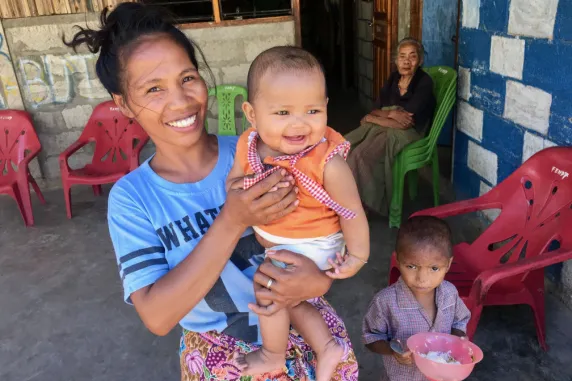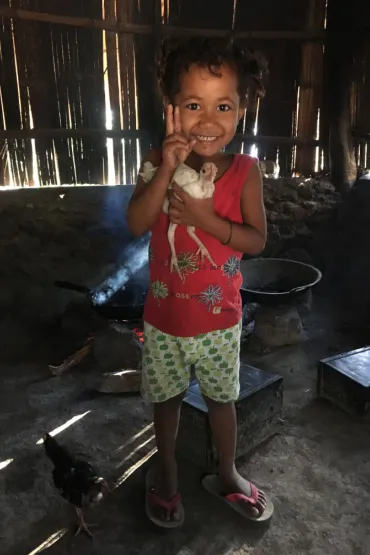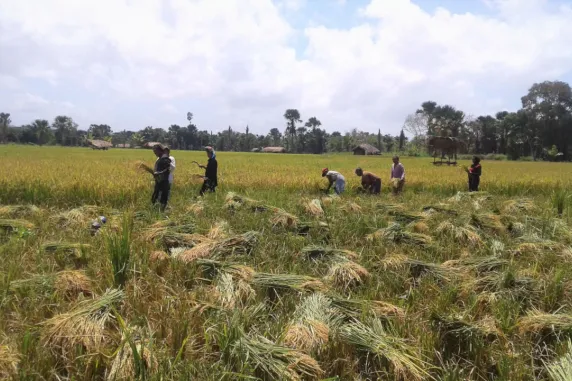Research shows maternal diets are important for children’s dietary quality
Improving the dietary quality of women and children is essential to reduce all forms of malnutrition. Dietary diversity, a key component of high-quality diets, enables the intake of essential nutrients and promotes adequate health. In low- and middle-income countries, lack of dietary diversity is a serious problem among groups with higher nutritional needs, such as infants and young children and women of reproductive age. Additionally, animal-source foods –which include dairy, eggs, meat, poultry, and fish, are important elements of dietary quality, because these contain essential amino acids that regulate growth as well as micronutrients that support optimal development and health.
In Timor-Leste, a post-conflict country that faces cyclical food insecurity, poor quality diets and protein deficiency are major contributors to malnutrition among rural populations, the majority of which base their livelihoods in agriculture. The aim of our study was to examine the dietary quality of children 6–59 months old and their mothers living in rural Timor-Leste. By better understanding the dietary patterns of families living in rural areas and their seasonal food fluctuations, policies and programmes can be better designed to improve child and maternal nutrition.
Our investigation assessed seasonal child and maternal dietary diversity and consumption of animal-source foods, using 1,236 observations from combined data among 167 mother-child pairs and collected over one year in four rural communities in eastern Timor-Leste. We used generalized linear and logistic mixed-effects models to examine the dietary differentials of mothers and children in two agricultural livelihood zones and across the seasons, as well as to identify household and agro-ecological characteristics associated with the dietary quality of children in relation to their mothers'.
The typical meal of most participants consisted of rice and some vegetables, a monotonous diet rich in carbohydrates and with little protein. We found that the dietary quality was marginally better for participant living in coastal than in mid-altitude livelihood zones. In coastal communities, children were more likely to consume dairy, fish and eggs. However, we found women’s overall diets to be strikingly poor —only a fraction was likely to meet micronutrient adequacy, and their consumption of animal-source foods was lower than among children. Mothers gave more dairy products and eggs to children, suggesting that these are considered adequate child’s food and that mothers prioritize their children when these foods are available.
Moreover, we also found that seasonality predicted the consumption of animal-source foods. For example, flesh foods and red meat were much more likely to be consumed during the dry season, when cultural ceremonies are often performed. Importantly, our results showed a positive and strongly significant association between the dietary indicators of children and those of their mothers’, indicating that what mothers eat is a sound predictor of the dietary quality of their children. In addition, we found that mothers who had completed secondary education were more likely to provide improved diets to their children.
In summary, the main factors that influenced the dietary outcomes of children were the quality of maternal diets and their educational attainment, more so than agro-ecological characteristics. These findings contribute to the understanding of the contextual determinants of rural diets in low and middle-income countries and provide insights on how animal-source foods are distributed in a unique socio-cultural setting. Overall, our study highlights that addressing the dietary quality of children in rural Timor-Leste would benefit from improving women’s diets through better access to nutritious foods and to secondary education. We recommend promoting the production, affordability and consumption of nutrient-dense foods, including animal-source foods, through sustained nutrition-sensitive programmes.
Bonis‐Profumo, G, Stacey, N, Brimblecombe, J 2020, “Maternal diets matter for children's dietary quality: Seasonal dietary diversity and animal‐source foods consumption in rural Timor‐Leste”, Maternal Child Nutrition e13071. https://doi.org/10.1111/mcn.13071
Gianna Bonis-Profumo is a RIEL PhD candidate
Related Articles
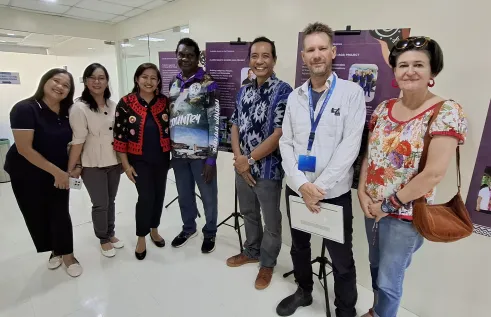
Environmental researchers and rangers visit Philippines as part of NT-Philippines exchange
CDU researchers and representative from Dhimurru Aboriginal Corporation completed a valuable exchange with Philippine leaders and rangers in June 2025.
Read more about Environmental researchers and rangers visit Philippines as part of NT-Philippines exchange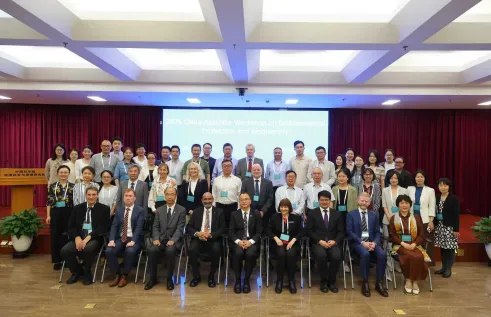
Professorial delegation discusses environmental protection and biodiversity in Beijing
Charles Darwin University (CDU) academics were among a high-level Australian delegation that visited the Chinese Academy of Sciences (CAS) last month.
Read more about Professorial delegation discusses environmental protection and biodiversity in Beijing
Rangers and PhD candidate unite at mapping workshop
How can technology support the revival of knowledge, its intergenerational transmission, and the defense of ancestral lands, all while ensuring cultural protocols are upheld?
Read more about Rangers and PhD candidate unite at mapping workshop
